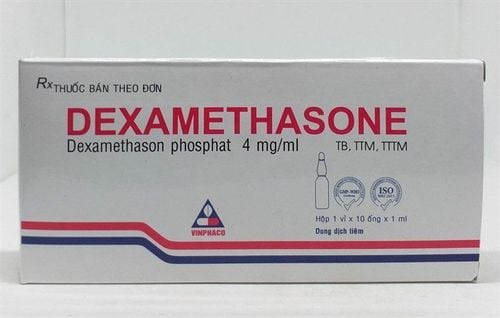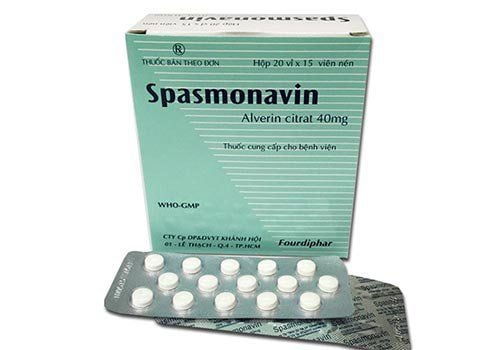This is an automatically translated article.
Montemax belongs to the group of drugs that act on the respiratory tract. Montemax contains montelukast, which is used in the treatment of chronic bronchial asthma in both children and adults, preventing exercise-induced bronchospasm. Montemax is also used to prevent chronic asthma attacks, used for patients with asthma due to sensitivity to aspirin.1. What is Montemax?
The main ingredient in the drug Montemax 5mg is Motelukast with the content of 5mg or 10mg for the preparation Montemax 10mg, which is prepared and packaged in the form of chewable tablets. Montelukast blocks cysteinyl leuko-triene receptors in the airways, so it inhibits bronchoconstriction caused by inhaled LTD4 substances during asthma. Montelukast prevented early or late bronchoconstriction induced by antigens in 75% and 57%, respectively.
With the use of the main ingredient, the drug Montemax 5mg is indicated for use in adults and children in cases such as:
Treatment of chronic bronchial asthma for children (5mg preparation) and adults ( 10mg preparations) and at the same time suppress symptoms during the day and at night; Prevent exercise-induced bronchospasm; Patients with bronchial asthma due to sensitivity to aspirin; Prophylaxis of chronic asthma attacks. Montemax is contraindicated for use in subjects with hypersensitivity to any of the ingredients.
2. Instructions on how to take the drug Montemax
How to use: Take the medicine directly, chew the whole tablet. Montemax is usually taken either on an empty stomach or on an empty stomach.Dosage:
Children from 6 months to 6 years old: Take 1 pack of Montemax 4mg in the evening. Children from 6 to 14 years old: Take 1 tablet of Montemax 5mg in the evening. Children 15 years and older: Take 1 tablet of Montemax 10 mg. Every day/time in the evening. The effectiveness of the course will be based on the Montemax asthma test parameters occurring within 1 day of the initiation of treatment, it is recommended that patients continue taking Montemax once their asthma is under control as well as during asthma worsens.
No dose adjustment is required in elderly, renally impaired or patients with mild to moderate hepatic impairment.
Note: The above dose of Montemax is for reference only. The dosage of the specific drug depends on the condition and the progression of the disease. For the right dose, contact and consult a doctor or medical professional.
3. Side effects of the drug Montemax
During the use of Montemax 5mg, the possible side effects include:
Hypersensitivity reactions including anaphylaxis and eosinophilic infiltration in the liver; Elevated serum ALT, AST and hepatitis (cholestatic hepatitis, hepatocellular, mixed liver injury); Diarrhea, dry mouth, indigestion, nausea and vomiting; Upper respiratory tract infection; Increased bleeding; Dizziness, somnolence, paresthesia/hypoesthesia and seizures; Palpitations; Angioedema, urticaria, bruising, rash, pruritus and erythema nodosum ; Epistaxis; Joint or muscle pain and cramps; Weakness or fatigue, malaise, edema and fever. When experiencing undesirable effects of the drug, stop taking the drug and immediately notify the doctor or go to the nearest medical facility.
4. Notes when using Montemax
Use with caution, especially in children and when co-administering CYP3A4 inducers (eg, phenytoin, phenobarbital, rifampicin)
Should not be used with other products containing the same ingredient as montelukast; Do not use to treat acute asthma attacks; Do not abruptly substitute oral or inhaled corticosteroids with Montelukast; Close clinical monitoring when reducing the dose of systemic corticosteroids in patients receiving Montelukast; Galactose intolerance, Lapp lactase defect, glucose-galactose malabsorption should not give Montemax.
5. Montemax drug interactions
Montemax can be used with other conventional therapies to prevent and treat chronic asthma. In drug interaction studies, the clinically recommended dose of Montemax did not have a serious effect on the pharmacokinetics of the following drugs: Theophylline, prednisone, prednisolone, oral contraceptives (ethinyl estradiol/norethindrone 35/ 1), terfenadine, digoxin and warfarin. Caution when using concomitantly with inducers of CYP3A4 such as phenytoin, phenobarbital, rifampicin,... Interactions with other asthma medications: Montemax can be added to the existing asthma regimen for patients. Bronchodilator treatment: Montemax can be added to the treatment regimen for patients not adequately controlled by bronchodilators alone. When clinical response is evident (usually after the first dose), bronchodilator reduction can be made when the patient is able to tolerate it. Inhaled Corticosteroids: Treatment with Montemax provides additional clinical benefit for patients already treated with inhaled corticosteroids. Corticosteroid dose reduction can be made when the patient is able to tolerate it. The dose should be reduced gradually. In some patients, the dose of inhaled corticosteroid may be completely reduced. It is not possible to immediately replace inhaled corticosteroids with Montemax.













